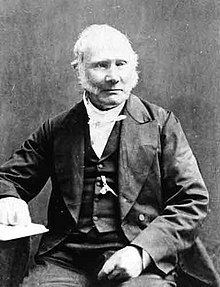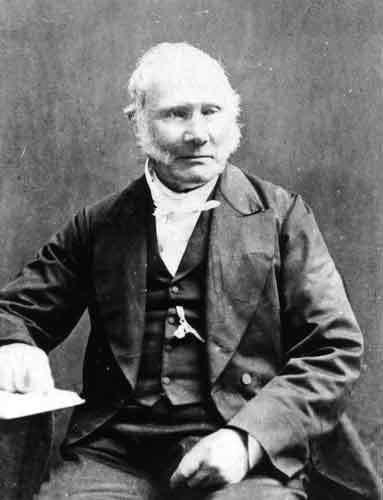Nationality Scottish Role Clergyman Citizenship United Kingdom Siblings James Stirling | Grandchildren Matthew Stirling Name Robert Stirling | |
 | ||
Parent(s) Patrick Stirling and Agnes Stirling Children Patrick Stirling, James Stirling (1835–1917) People also search for Patrick Stirling, James Stirling, James Stirling (1835–1917), Matthew Stirling | ||
Robert Stirling and his engine
Ein mittels Kerzenwärme betriebener Demonstrations-Stirlingmotor
The Reverend Dr Robert Stirling (25 October 1790 – 6 June 1878) was a Scottish clergyman, and inventor of the Stirling engine.
Contents
- Robert Stirling and his engine
- Ein mittels Kerzenwrme betriebener Demonstrations Stirlingmotor
- Background and Christian ministry
- Hot air engine
- Optical instruments
- Patents
- Bessemer process
- Personal life and death
- Honours
- References

Background and Christian ministry
Stirling was born at Cloag Farm near Methven, Perthshire, the third of eight children of Patrick and Agnes Stirling and a grandson of Michael Stirling, inventor of a threshing machine. He inherited his father's interest in engineering, but studied divinity at the Universities of Edinburgh and Glasgow. and was licensed to preach in the Church of Scotland in 1816 by the Presbytery of Dumbarton. Later that year he became a minister on appointment as second charge of the Laigh Kirk of Kilmarnock. On 12 February 1824 Stirling was appointed as the minister of nearby Galston Parish Church from 1824, where he continued his ministry until 1878. In 1840 he was awarded an honorary of Divinity by University of St Andrews.
Hot air engine
He invented what he called the Heat Economiser (now generally known as the regenerator), a device for improving the thermal/fuel efficiency of a variety of industrial processes, obtaining a patent for the economiser and an engine incorporating it in 1816. In 1818 he built the first practical version of his engine, used to pump water from a quarry.
The theoretical basis of Stirling's engine, the Stirling cycle, would not be fully understood until the work of Sadi Carnot (1796–1832).
Optical instruments
While in Kilmarnock, he collaborated with another inventor, Thomas Morton, who provided workshop facilities for Stirling's research. Both men were interested in astronomy, and having learnt from Morton how to grind lenses, Stirling invented several optical instruments.
Patents
Robert, together with his brother James, an engineer, took out several further patents for improvements to the air engine and in the 1840s James built a large air engine driving all the machinery at his Dundee Foundry Company.
Bessemer process
In a letter of 1876, Robert Stirling acknowledged the importance of Henry Bessemer's new invention – the Bessemer process for the manufacture of steel – expressing a hope that the new steel would improve the performance of air engines.
Personal life and death
On 10 July 1819, Stirling married Jean Rankine at Kilmarnock. They had seven children:
Rev. Robert Stirling died in Galston, East Ayrshire on 6 June 1878. He is buried in Galston Cemetery where a new gravestone was erected in December 2014 by public subscription replacing the original stone which was in a ruined state. It was rededicated on Sunday 3 May 2015.
Honours
On 3 October 2014 Stirling was inducted into the Scottish Engineering Hall of Fame
